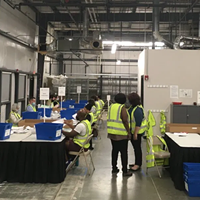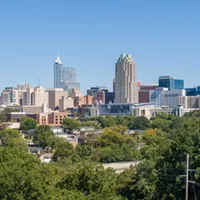Monday, March 14, 2011
News Can the U.S. handle a nuclear meltdown?
Posted By Rhiannon Fionn-Bowman on Mon, Mar 14, 2011 at 12:36 PM
With the nightmare in Japan continuing to unfold, that's a question Charlotteans definitely need to ask since we're sandwiched between two nuclear plants — one in York County, S.C., and one on Lake Norman. And, they're not perfect. Those Duke Energy plants have minor leaks and heat ups every so often; apparently nothing that's unmanageable, though.
What scares people about nuclear is when manageable becomes uncontrollable.
Check out the post from ProPublica.org on the United States ability to handle a nuclear meltdown. Here's a snip:
As engineers in Japan struggle to bring quake-damaged reactors under control [1], attention is turning to U.S. nuclear plants and their ability to withstand natural disasters.Rep. Ed Markey, a Massachusetts Democrat who has spent years pushing the Nuclear Regulatory Commission toward stricter enforcement of its safety rules, has called for a reassessment. Several U.S. reactors lie on or near fault lines, and Markey wants to beef up standards for new and existing plants.
The New York Times reported last week [4] that the NRC has reviewed the concerns raised by the engineer, John Ma, and concluded that the design is sufficient without the upgrades Ma recommended. Westinghouse maintains that the reactor is safe [5].
"This disaster serves to highlight both the fragility of nuclear power plants and the potential consequences associated with a radiological release caused by earthquake related damage," Markey wrote NRC Chairman Gregory Jaczko in a March 11 letter [2].
Specifically, Markey raised questions about a reactor design the NRC is reviewing for new plants that has been criticized for seismic vulnerability. The NRC has yet to make a call on the AP1000 reactor [3], which is manufactured by Westinghouse. But according to Markey, a senior NRC engineer has said the reactor’s concrete shield building could shatter "like a glass cup" under heavy stress.
News reports have said the Fukushima Daiichi Nuclear Power Station went to backup diesel power after the quake but lost it, along with the ability to keep cooling water flowing.
Edwin Lyman, a senior scientist with the Union of Concerned Scientists, told Reuters [13] that U.S. reactors don't have adequate backup power. "We do not believe the safety standards for U.S. nuclear reactors are enough to protect the public today," he told the news agency.
NRC spokesman David McIntyre said the agency was not granting interviews about the Japan quake. He pointed to the agency's website, which does have a lot of information on the seismic issues.
Read the rest of this post, by John Sullivan, here.
Get a feel for how nuclear power plants work with this video, which was (obviously) created by nuclear energy fans discussing energy in the United Arab Emierates:
Speaking of...
Comments
Showing 1-1 of 1
Latest in The CLog
More by Rhiannon Fionn-Bowman
-
Cancer's better with a side of 'shrooms
Aug 7, 2020 -

The Last Mountain will move viewers
Aug 4, 2011 -
Government's mixed message for women
Aug 2, 2011 - More »










